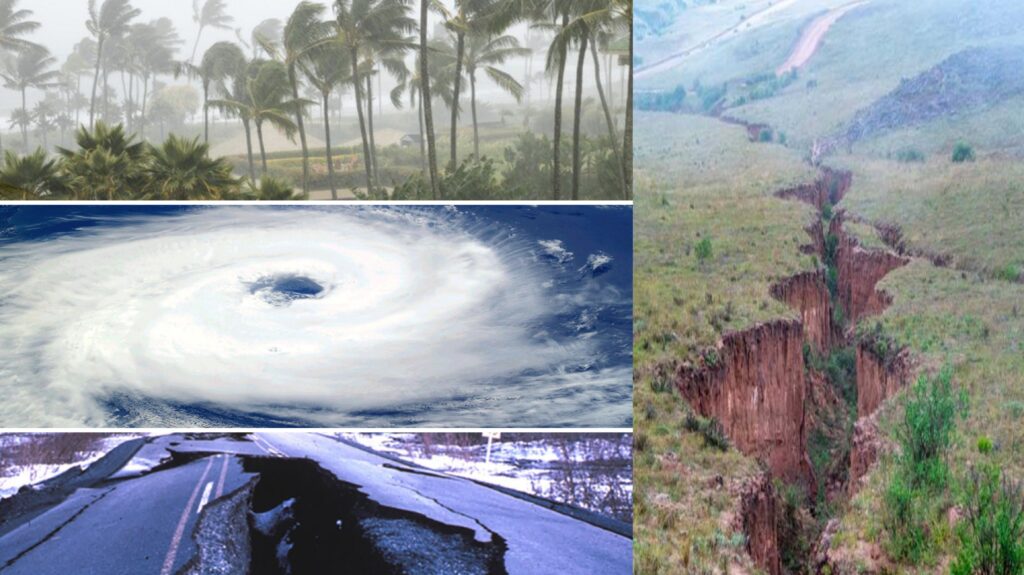
Earthquake is moving of Earth surface by the moving of tectonic plates. And Cyclone created by moving of air from high pressure to low pressure in ocean surface.
Here are some of Earthquake effects are
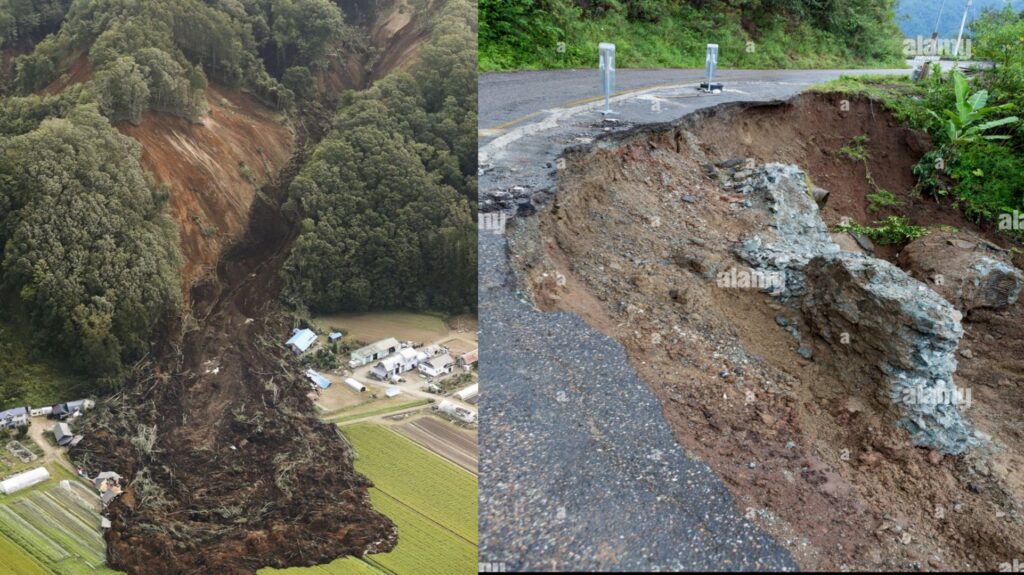
1. Earthquakes can affect forests in mountainous regions, This is because earthquakes can trigger landslides, rockfalls, ground shaking, which can significantly disrupt forest ecosystems, the impact depends on the magnitude of the earthquake, the depth of its epicenter.
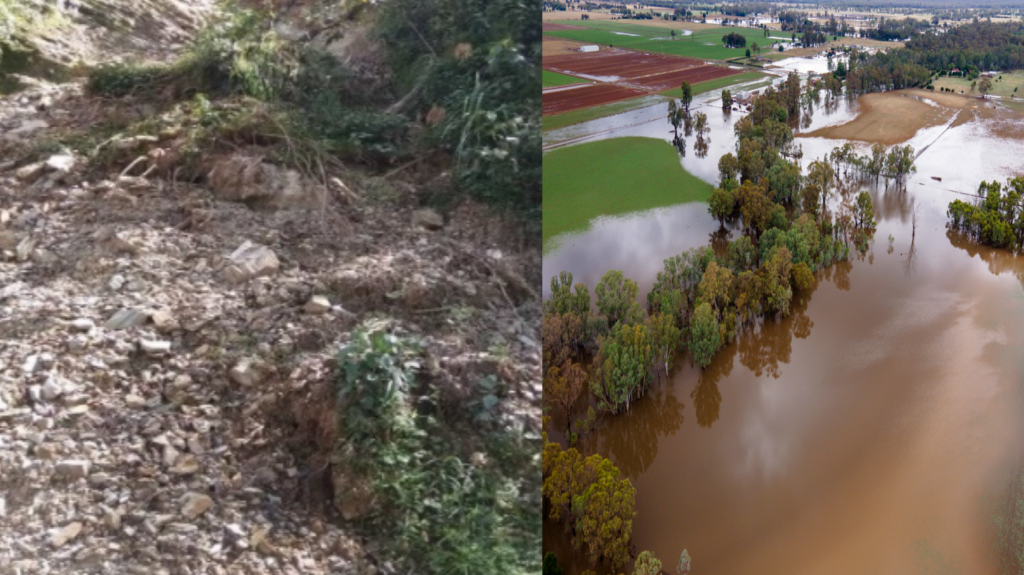
2. Forests that are damage from earthquakes and cyclones are Pacific Northwest Coastal Rainforests, Amazon Rainforest,Southeast Asian Rainforests Malaysian, Indonesian rainforests.
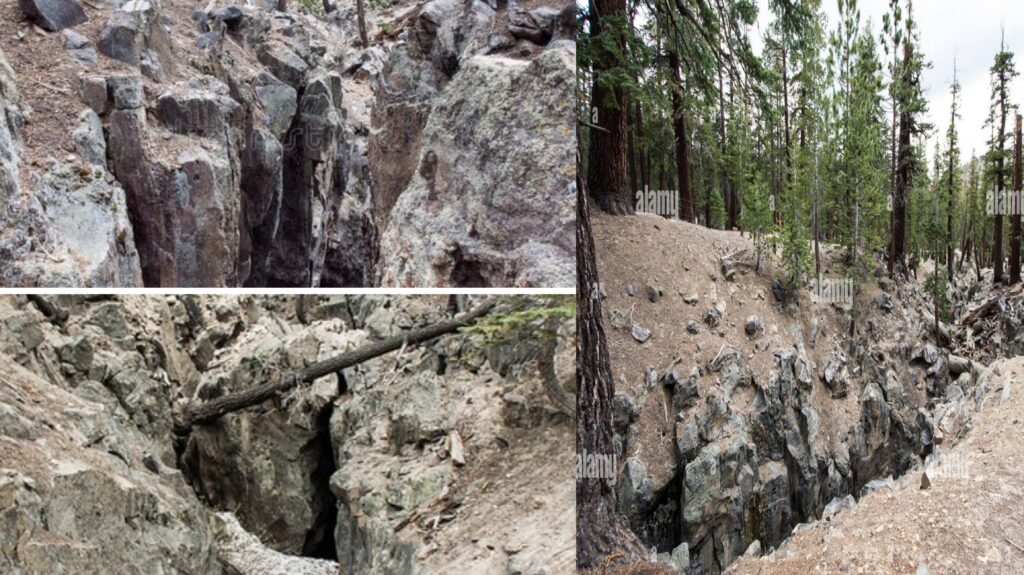
3. Tropical Rainforests of Central Africa, Coastal Redwood Forests Redwood National and State Parks in California, USA, Boreal Forests Siberian Taiga in Russia,Japanese Cedar Forests, Yakushima Island, Japan, Hawaiian Rainforests, New Zealand Temperate Rainforests, Madagascar Rainforests.
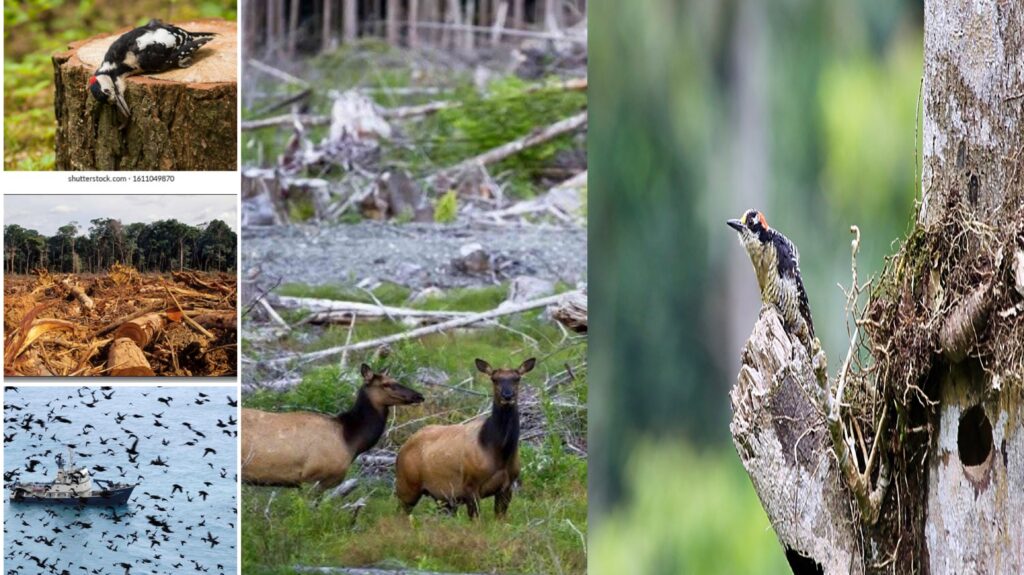
4. Earthquakes can alter landscapes, destroying habitats crucial for wildlife survival, Rockfalls, landslides, and collapses can destroy burrows, nests,and dens of wildanimals.
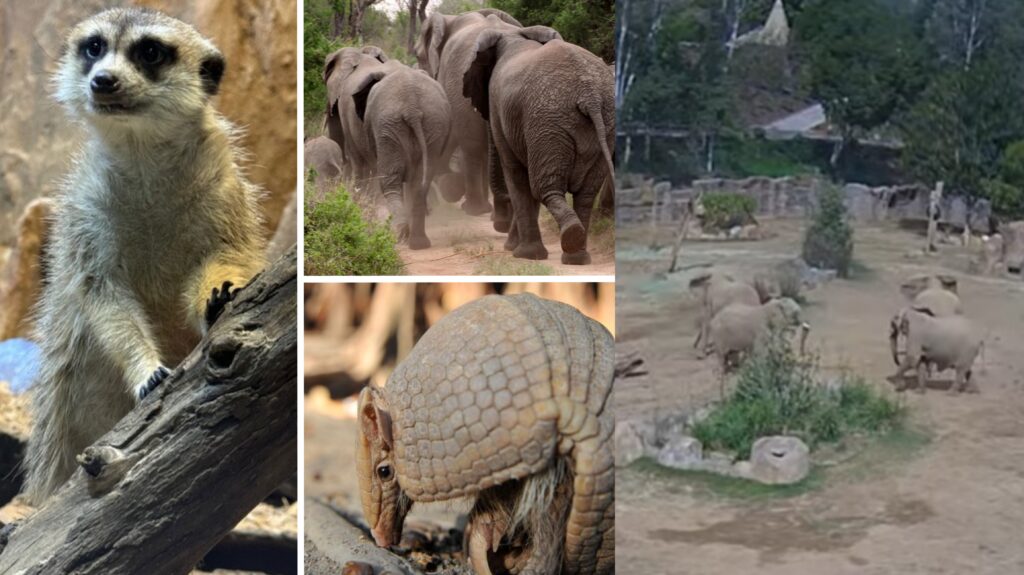
5. Wildanimals killed by collapsing structures or falling debris.Wild animals may be displaced from their homes due to the destruction of their habitats. This leads them to wander into populated areas or unfamiliar territories in search of food, water, and shelter.
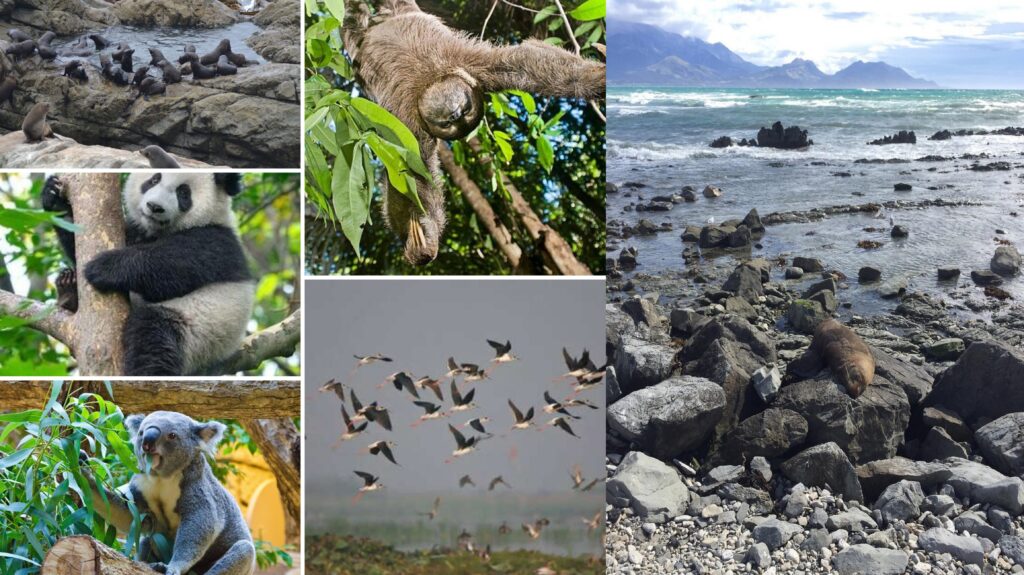
6. Wildanimals trapped, injured, killed directly due to the earthquake’s effects. Earthquakes can also lead to secondary hazards, such as fires or floods, that further harm wildlife populations.
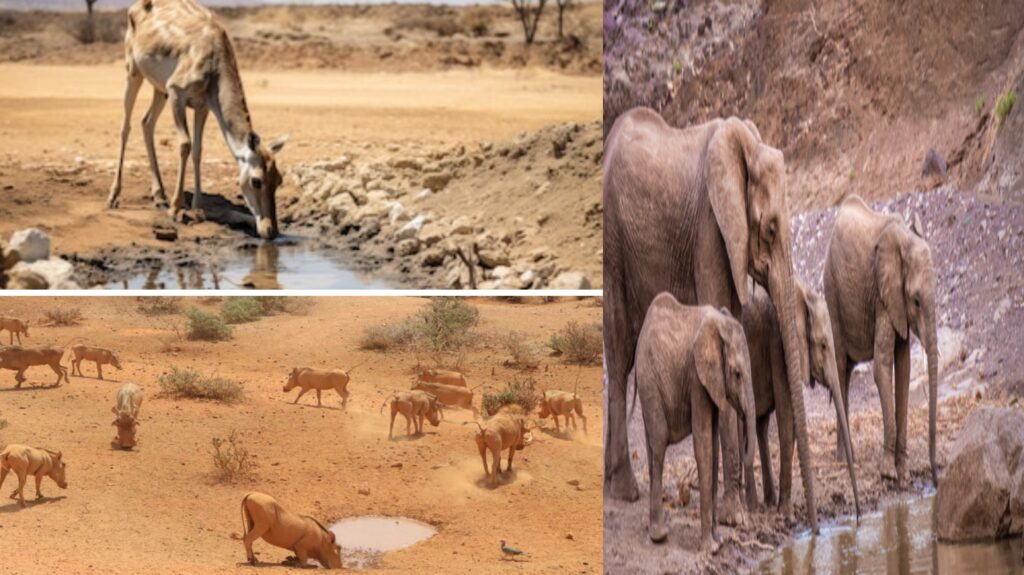
7. Earthquakes can alter watercourses, affecting availability of drinking water for wildlife, it induced soil liquefaction can affect plant growth, impacting herbivorous animals.
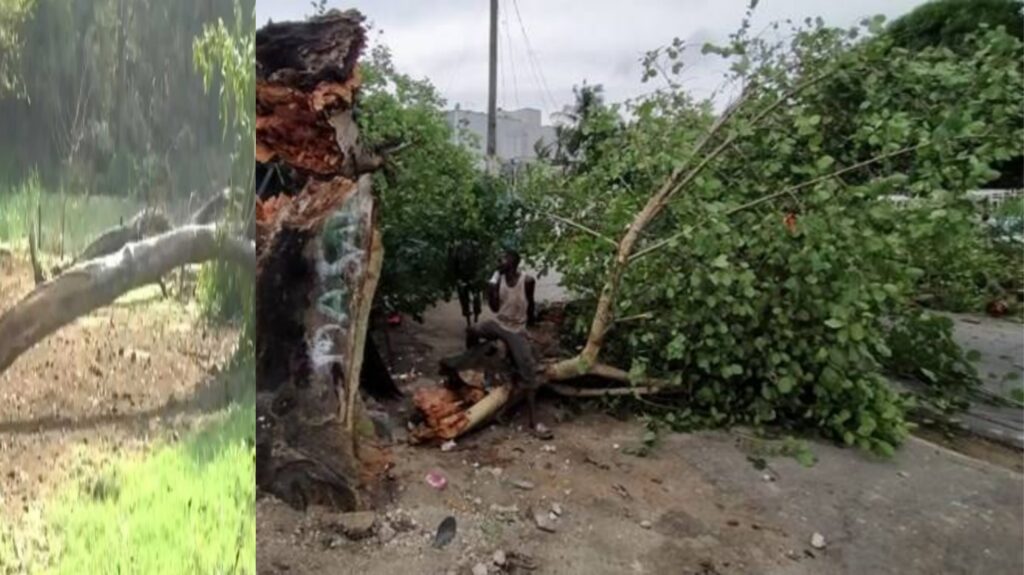
8. Earthquake intense shaking can cause trees to break, topple, or lose branches, especially in older or weaker stands.
Cyclones and typhoons, depending on the region have a significant impact on wild animals and ecosystems. The effects can be devastating for wildlife, as these powerful storms bring strong winds, heavy rainfall, and storm surges.
Here’s how wild animals can be affected by cyclone –
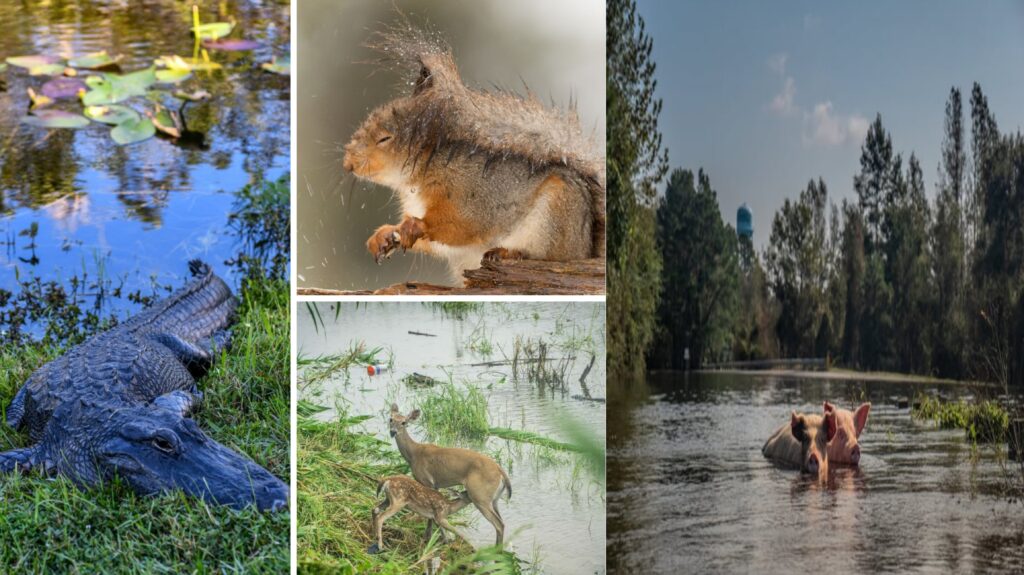
1. Cyclones bring heavy rainfall and storm surges that can flood coastal habitats like mangroves, wetlands, and estuaries. Freshwater and saltwater ecosystems may be disrupted, displacing animals that depend on these areas for food and shelter.
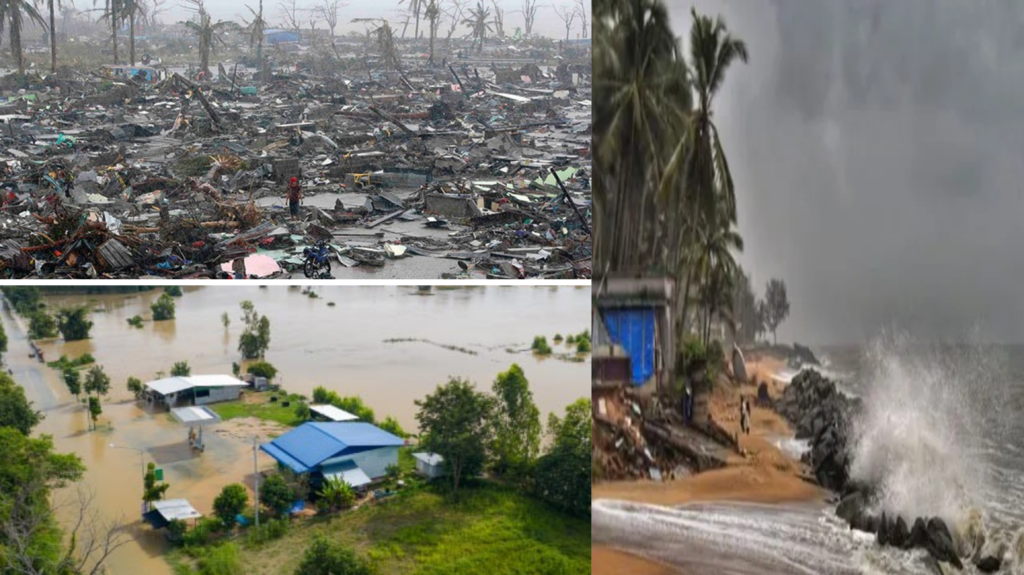
2. Strong winds can uproot trees, which destroys forests and other habitats, affecting animals that rely on these areas for shelter, nesting sites, or food.
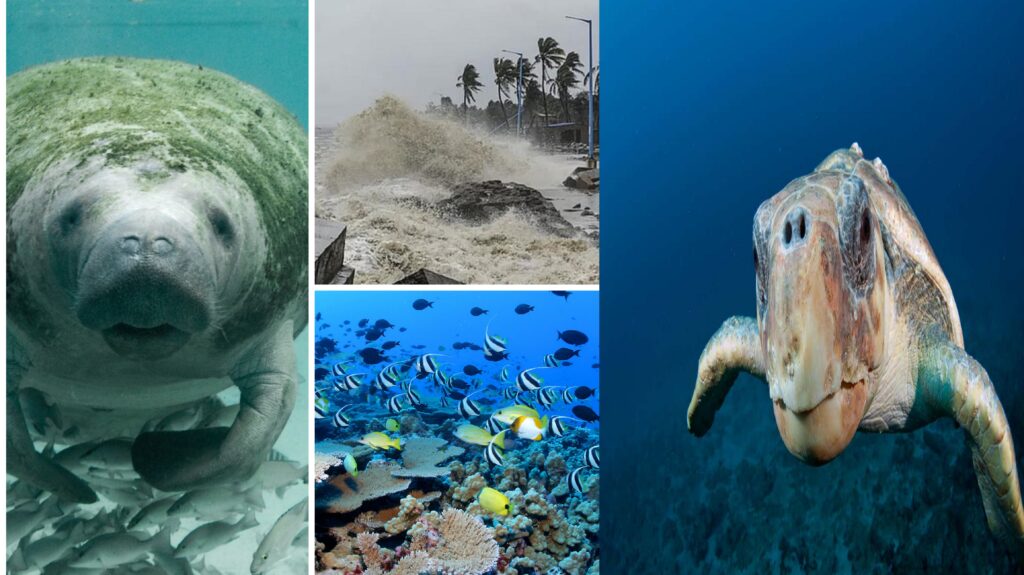
3. Cyclones can damage coral reefs, which are vital habitats for marine life. The storm’s turbulence can cause physical harm to the reefs, reducing biodiversity and food sources for marine species.
4. Wildanimals may be forced to flee their natural habitats, seeking refuge in less affected areas. This can cause overcrowding, competition for resources, and exposure to predators in new environments.
5. Displaced animals may find themselves in unfamiliar surroundings, increasing their vulnerability to predators. Additionally, some species might be less adept at finding food in these new territories.
6. Cyclone winds and flying debris can injure or kill animals, especially those that are unable to find shelter in time. This includes both land and marine animals.
7. Rising waters can drown or strand land animals, particularly those living in low-lying or coastal areas. For marine animals, the turbulence and altered ocean conditions can lead to displacement or deaths.
8. Cyclones often disrupt food supply chains for animals, both on land and in the water. The destruction of plants, crops, and other sources of food can result in a scarcity of resources for herbivores and the predators that rely on them.
9. Marine species, cyclones can stir up sediment and reduce water clarity, impacting their ability to find food, especially for filter feeders like corals and mollusks.
10. Many animals such as birds, sea turtles, and mammals, may have breeding seasons that coincide with cyclone seasons. The destruction of nests, eggs, and breeding grounds can severely impact the reproductive success of these species.
11. Animals those with high intelligence and social structure can experience psychological stress due to the sudden changes and chaos brought by cyclones. The disruption of their environment can lead to confusion and behavioral changes.
12. Cyclone effect can take months or even years for ecosystems to recover. Long-term effects on food chains, animal populations, and biodiversity can occur as habitats slowly regenerate.
In summary, cyclones can cause both immediate harm and long-lasting disruptions to wild animals and their ecosystems. Conservation efforts and disaster preparedness plans that take wildlife into account can help mitigate some of these impacts.